#way to use up your only 7th level spell slot before getting challenged to a duel idiot
Photo
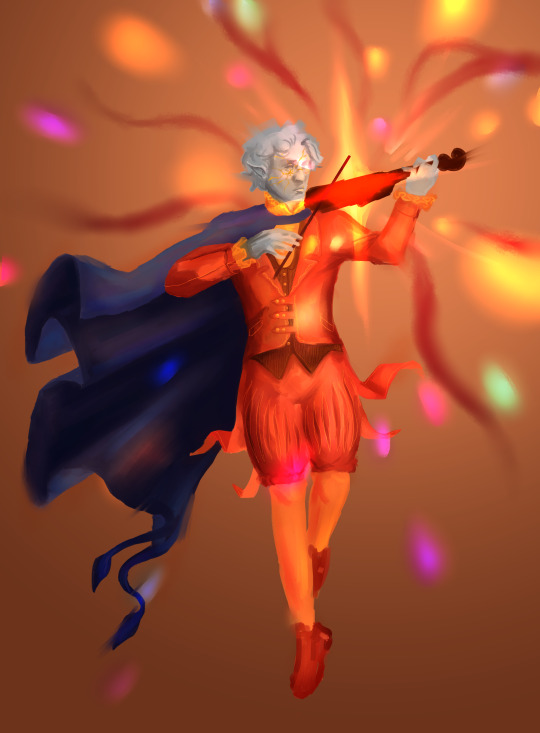

got lazy w this one but....... he got to show off his new spell.......
#fall#calleach's ward#dnd#dungens and dragons#this is lazy but i like the colours#way to use up your only 7th level spell slot before getting challenged to a duel idiot#bard#prismatic spray#dnd pc art#cward
9 notes
·
View notes
Text
Ways your characters can transition between genders within the mechanics of dnd
this is not at all what this blog is usually about but I recently watched Identity: a trans coming out story by philosophy tube and like a true nerd I saw a moving and breath-taking piece of art and immediately attempted to apply it to Dungeons and dragons.
1. The Witches brew
The viscous green liquid within the cauldron bubbled as a wizened hand stirred with a gnarled wooden spoon “Sip once a day, every day for a year” croaked the witch “but never during the full moon”
A potion or blessing provided by the local wise woman/witches coven/hag that will slowly but surely transform the subject. This idea is maybe less steeped in the mechanics of dnd but this idea seems so classically witchy i had to include it plus this would likely be the only method of transition available for the common folks in your average dnd setting, for DM’s a fun level 1 adventure for your hero's could maybe include a character wishes to brew a potion of transitioning but is missing a vital ingredient and the party must set off on a quest to find it or it could be more of a long term thing, maybe one of the PCs is using such a potion and must occasionally either return to the witches hut to stock up or gather the ingredients themselves, lots of possibilities.
I thought that a slower transformation was appropriate since witches are fairly low level in the grand scheme of things however hags are known for making deals so maybe your character has bargained for a faster transition but then the question is what did they offer in exchange?
2. By Divine Favour
You kneel and whisper a prayer as you had done a thousand times before but this time something was different, from the sky, a beam of golden light falls down upon you and you feel power deep within your bones.
The gods are the most powerful creatures in the lore of dnd but with that comes a degree of separation, the gods are not likely to grant your wishes just because you asked so your best bet is to go to a cleric or become one yourself, spell wise however there is little they can do for you unless the dm has a very generous interpretation of the term ‘restoration’ luckily clerics have the divine intervention feat where they roll a d100 and if the number they roll is below their cleric level they can call on their deity for aid with a specific task, this task can be anything from drying out the laundry with some sun beams or alleviating dysphoria with a godly transfiguration. clerics get this ability at level 10 which means that there's a one in ten chance of success from the beginning and they can perform it once per long rest so just hang out with them for a fortnight and wait for luck to turn your way.
3. A Pact From Beyond
You hang in space as if swimming in an ocean and flying through the clouds all at once. You feel a mind older that time and vast enough to swallow a city whole asks you “what is it you desire?”
Here we are at my bread and butter. Eldritch pacts have been made for much less than a definitive change of identity so you could also throw in that your friends and family will only remember you as your new identity or you could just have anyone who ever deadnames you sucked into the nine hells.
There are other option if you don’t want to base your entire pact on transitioning. At second level you gain access to eldritch invocations one of which could be mask of many faces which allows you to cast disguise self at will without using a spell slot, what this means is that you can decide how your character looks 100% of the time. disguise self only lasts an hour but you can just cast it again and again. obviously this is a low level ability so it does have limits, the main draw back is that the spell is only an illusion. you can make your character look a certain way but you can’t change their body, at least until 7th level when you can get the sculptor of flesh invocation that allows you to cast polymorph but sadly you do have to use a spell lot for this invocation so even though you will have a proper transformation it will at most last an hour.
but hey the situation isn't hopeless I’ve heard that unfathomable eldritch beings are very reasonable creatures as long as you are willing to negotiate.
4. Find a wizard
“The ritual lasts an hour and requires you to be completely submerged” Said the kindly old man as he excitedly hopped around his arcane laboratory showing off his research which is complete gibberish to you “the magic of the clay will sustain you but if you are uncomfortable with the sensation of not breathing I have some improvised wooden reeds which you could use to breath through however a foreign body within the ritual may require me to take a little extra time to...”
You silence him with a wave of your hand “Don't worry about it.” You lie back on the table “Lets begin,”
Wizards have access to a larger amount of spells that other classes but only a few of those spells are fit for our purposes, Wizards have access to disguise self which we discussed in the previous section as well as alter self which would be perfect for our needs if it wasn't for the hour long time limit, if you can find a way to keep the alter self spell up indefinitely through either a magic item or a round the clock team of spell casters who take turns casting every hour, you would have a better time but even then it is an ongoing magical effect so it can be cancelled either by a dispel magic spell or an antimagic field but fear not dear reader! for wizards have the ultimate trans spell... Widowgast’s Transmogrification.
Now technically this spell isn’t part of official dnd material however the world the spell exists in is an official dnd world so I consider it cannon by proxy. Widowgast’s transmogrification is a spell that permanently transforms a willing humanoids body into another type of humanoid body this means you can change the race and/or gender of the subject. So you essentially get to look exactly how you want to with no magical baggage. There are some drawbacks of course this is a 6th level spell so you need to be at least an 11th level wizard to be able to cast it or you need to find a trustworthy wizard which is a challenge in of itself plus the spell components are costly but in my opinion the pros of the unique spell outweigh the cons.
#DnD 5e#Dungeons and Dragons#Fifth Edition#warlock#wizard#Cleric#witch#hag#trans#transgender#transitioning#its 4:30 am but i couldnt sleep till i got this down#ill definitely have to go back#and fix a bunch of mistakes in the morning#speaking of mistakes if ive said anything mean or offensive by accident please message me and ill take this down im not trying to be shitty#to anyone
220 notes
·
View notes
Text
How to Play as Yugi Muto in DnD 5e
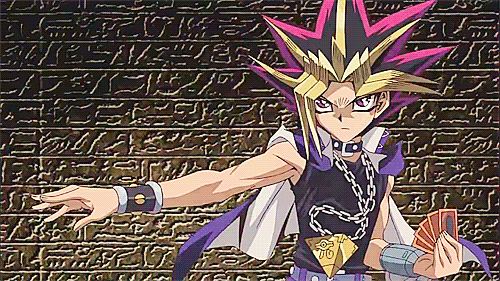
A long time ago, I made a build for the Dark Magician (I’ll leave a link [here].) At the time, I’d considered trying to make a build for Yugi, but since Yugi lacks any real powers of his own, there wasn’t really enough to go off of. But with new UA spells that prioritize summoning and new UA subclasses, the time has finally come to give Yugi his proper build. For this build, we are considering Yugi and the Pharaoh to be one character. We will also be treating this build as though Yugi has the Dark Magician as his Deck Master, a special feature used in some side content and video games where the Deck Master actually assists their duelist. So Yugi’s spell list will merge two primary conditions: summoning creatures to fight on his behalf, and spell effects of cards in Yugi’s deck, including one-off cards and less famous cards he’s used to fill out his Wizard Spellbook.

Yugi is an anime character. In the past, my general rule for anime characters is to make them Variant Humans. This is primarily because Anime Characters are stronger than normal humans and often have magical powers that make them not quite human. I’ll be using the Variant Human option, however Kalashtar also works due to Yugi’s split minds and resistance to psychic mind games. Halflings aren’t my favorite race to play, but Yugi is abnormally short, and the Pharaoh is uncannily lucky, so it can definitely work for their build. As a Variant Human, we’ll pick up the Lucky feat and give ourselves +1 INT and +1 DEX.
The Pharaoh is willing to kill Kaiba to win a children’s card game. Yugi is not. They average out to Neutral Good.
The Pharaoh was the King of Egypt. Obvious Noble Background is obvious.
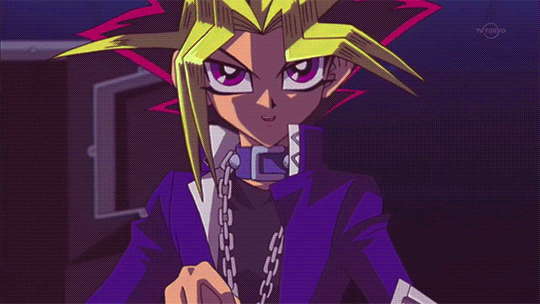
Heart of the Cards
WIZARD
Order of Scribes. This ended up being a perfect storm. Firstly, the new UA batch of summoning spells primarily landed under the Wizard umbrella. So, this gives Yugi a nice variety of summoning options. But it gets even better once you look at your subclass abilities. The Wizardly quill is about the only thing that doesn’t really fit for Yugi, but everything else will. Awakened Spellbook grants the pages Yugi summons from a level of sentience. In Yugioh the cards house duel monster spirits, and Yugi’s grandfather taught him to value the Heart of the Cards, the very idea that Yugi’s deck is a sentient thing. This subclass technically talks about a bound book, but Yugi’s still channeling his magic and spells through his cards, so I’d consider Yugi’s deck a reflavor of his spellbook, thus he’s able to use it as his spellcasting focus. Yugi’s able to alter the damage type of a spell he casts. You could flavor this as classic season 1 Yugioh where nobody played by the rules, or as Yugi pulling a card out of his deck that he’ll never use in any other duel, which tended to be a common deus ex machina for him. Master Scrivener can allow Yugi to copy a card onto a scroll and pull it out of his butt whenever he wants. a fun cheeky way to mock his plot armor. It also casts at 1 level higher, meaning Yugi is one again breaking the rules because he’s the King of Games. Manifest Mind is where the Deck Master concept becomes more clear, as you can create a tiny spectral form of the Dark Magician fighting beside you, and really lets you fully embrace the partnership between Yugi and the Dark Magician in combat. Since this feature does specify using a tiny specral creature, Kuriboh is another good Deck Master monster for Yugi. Finally, One with the Word allows Yugi to swap places with the Dark Magician to avoid one or both of them from being killed. Yugi can also destroy some of the cards in his collection to bring him back to life if Dark Magician is on the field and his spellbook has the resources. This also motivates Yugi to want to collect as many cards/spells as he can, even if he doesn’t prepare them all or use them in his deck. If you really want to play up the roleplay aspect of this build and commit to the gimmick of playing as Yami, you could write spells on sheets of paper and treat them like an actual deck of cards. It’s really just for roleplaying purposes, and could make the game needlessly challenging, but it could also be a fun challenge to hope you draw the spell you need right when you need it. This could be as vague as just having a card that says “3rd level spell”, or as specific as having say as many copies of a specific spell as you have spell slots to cast it. As it’s just flavoring and roleplaying mostly, come up with your own fun ways to incorporate the deck aspect into a mechanic for gameplay and tell me your ideas. I’ll bet there’s many fun ways to make this character work in an inetersting way.

King of Games
SUMMONING
Find Familiar
Flock of Familiars
Spirit Shroud
Summon Fey Spirit
Summon Lesser Demons
Summon Shadow Spirit
Summon Undead Spirit
Conjure Minor Elemental
Summon Aberrant Spirit
Summon Elemental Spirit
Summon Greater Demon
Conjure Elemental
Infernal Calling
Summon Fiendish Spirit
SPELLS & TRAPS
Brain Control // Dominate Person, Dominate Monster, Enemies Abound
Change of Heart // Charm Person, Charm Monster
Lightforce Sword // Banishment, Plane Shift
Magic Jammer // Antimagic Field
Burning Land // Blight, Abi’s Horrid Wilting
Magical Hats // Blur, Mirror Image
Raigeki // Lightning Bolt, Chain Lightning
Trap Hole // Circle of Death
Magic Cylinder // Counterspell
De-Spell // Dispel Magic
Heavy Storm // Whirlwind
Spellbinding Circle // Hold Person, Hold Monster
Swords of Revealing Light // Imprisonment
Thousand Knives // Power Word Kill
Mirror Force // Prismatic Wall, Wall of Force, Wall of Light
The Eye of Truth // True Seeing
Yami // Darkness
Makiu, the Magical Mist // Fog Cloud, Cloudkill, Stinking Cloud
Cursebreaker // Remove Curse
Dust Tornado // Dust Devil
Premature Burial // Animate Dead, Create Undead
Ragnarok // Melf’s Minute Meteors
General Magic // Mage Armor, Magic Missile, Shield
Setting a Trap Card // Glyph of Warding
Anime Protagonist Plot Armor // Wish
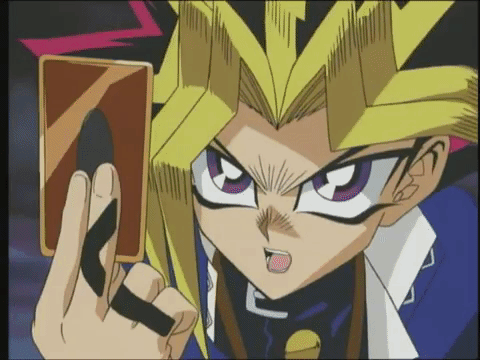
As a Wizard, our most important stat is going to be Intelligence for casting. Our Manifest Mind feature gives our Dark Magician our AC, so we’ll want a high Dexterity modifier to improve our Armor Class. Yugi is pretty hard to fool, so that’ll give us a good Wisdom score. Yugi is pretty good at destiny speeches and turning enemies into allies. We’ll give him a pretty decent Charisma score so he can persuade people to adopt his philosophies, or send people running into the shadow realm with his Intimidation. Our build prioritizes amassing strong minions between us and enemies, so we can neglect our Constitution a bit. That leaves our Strength stat to be ignored. Lifting all those small thin pieces of paper doesn’t exactly get Yugi ripped.

Name: Yugi Muto
Race: Variant Human
Background: Noble
Alignment: Neutral Good
Class: Order of Scribes Wizard (20)
Base Stats:
Strength: 8 (-1)
Dexterity: 20 (+5)
Constitution: 12 (+1)
Intelligence: 20 (+5)
Wisdom: 14 (+2)
Charisma: 10 (0)
Saving Throws:
Strength: -1
Dexterity: +5
Constitution: +1
Intelligence: +11
Wisdom: +8
Charisma: 0
Combat Stats:
HP: 102
AC: 18*
Speed: 30
Initiative: +5
Proficiency Bonus: +6
Passive Perception: 14
Dark Vision: 0 feet
Proficiencies:
Acrobatics (+5)
Animal Handling (+2)
Arcana (+11)
Athletics (-1)
Deception (0)
History (+11)
Insight (+8)
Intimidation (+6)
Investigation (+5)
Medicine (+2)
Nature (+5)
Perception (+2)
Performance (0)
Persuasion (+6)
Religion (+5)
Sleight of Hand (+5)
Stealth (+5)
Survival (+2)
Spell Slots
1st (4)
2nd (3)
3rd (3)
4th (3)
5th (3)
6th (2)
7th (1)
8th (1)
9th (1)
Yugi’s Deck
Cantrips
Firebolt
Frostbite
Lightning Lure
Message
Mind Sliver
1st Level
Charm Person
Find Familiar
Fog Cloud
Mage Armor
Magic Missile
Shield
2nd Level
Blur
Darkness
Dust Devil
Flock of Familiars
Hold Person
Mirror Image
3rd Level
Animate Dead
Counterspell
Dispel Magic
Enemies Abound
Glyph of Warding
Lightning Bolt
Spirit Shroud
Summon Fey Spirit
Summon Lesser Demons
Summon Shadow Spirit
Summon Undead Spirit
4th Level
Banishment
Blight
Conjure Minor Elementals
Summon Aberrant Spirit
Summon Elemental Spirit
Summon Greater Demon
5th Level
Conjure Elemental
Dominate Person
Hold Monster
Infernal Calling
True Seeing
Wall of Light
6th Level
Chain Lightning
Circle of Death
Create Undead
Summon Fiendish Spirit
7th Level
Plane Shift
8th Level
Antimagic Field
Dominate Monster
9th Level
Imprisonment
Wish
Features:
Arcane Rociety. covery. Regain 10 or less level 5 or lower spell slots on a short rest.
Awakened Spellbook. You can alter spell damage type and cast a ritual spell instantly once per long rest.
Lucky. 3 lucky points, add a d20 to rolls before you know the outcome.
Manifest Mind. Your spellbook projects a tiny spectral construct. Its HP is your INT + your Wizard Level and it uses your AC and saving throw die. It has darkvision at a range of 60 feet, sheds dim light at a range of 10 feet, and can pass through solid objects.
Master Scrivener. Copy a 1st or 2nd level spell from your spellbook onto a scroll. Use the scroll any time, and the spell is cast as being one level higher.
One With the Word. When you would die while Manifest Mind is active, purge spells from your spellbook whose level adds to 3d6. They can only be restored with a Wish, and are otherwise lost to you.
Position of Privilege. You belong in high society. People bend over backwards to accommodate you, and you can get an audience with other nobility.
Signature Spells. cast Summon Fey Spirit and Summon Undead Spirit once without using a spell slot.
Spell Mastery. Cast Mage Armor and Hold Person without spell slots.
Wizardly Quill. Less time and money copying spells into your spellbook.
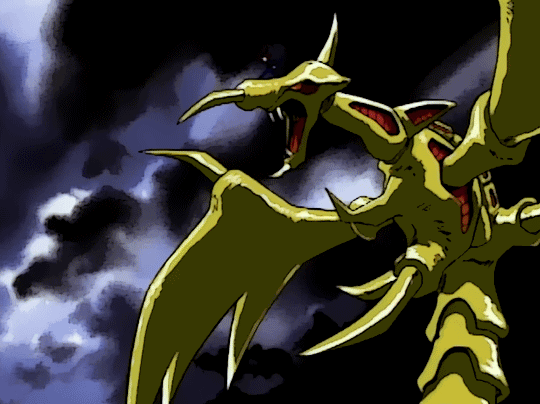
A major downside to this build is that all of his summoning spells require a gold cost, but if you’re fortunate, your DM will be generous enough with the gold to support the costs of this build. Technically, this build really could work for any duelist, and there’s plenty of other yugioh cards that could translate to DnD spells, but we were focused on Yugi’s canon spell and trap cards. We’re also extremely reliant on summoning, so if Yugi can’t summon, he’s going to have a bad time, and the build won’t be so useful.
#dnd#dungeons and dragons#yugioh#yugioh original series#yu-gi-oh#yugi#yami#yugi mutou#yugi muto#yugi mutoh#yugi moto#yami yugi#pharaoh#pharaoh atem#atem#egyptian#egypt#ancient egypt#ancient egyptian#dnd 5e#dnd fifth edition#5th edition#dnd 5th edition#d&d 5th edition#fifth edition#d&d fifth edition#duel monsters#yugioh!#yu-gi-oh!#kuriboh
236 notes
·
View notes
Text
Building Nico Minoru in D&D
I was actually thinking of building a different Marvel character using D&D 5e rules but then I realized this would, in theory, be a very simple build and also still very challenging because, well, we’re doing magic and magic in D&D is a lot of stuff. So why won’t we start with someone who can help us keep it relatively simple?

So first we need to decide what we want from this build. We need a wide variety of magic spells but also something that can reflect what happens if she breaks the “one word per spell” rule. We also need a magic staff that we can use in combat and finally a way for her to be the dean mother for all the other Runaways
As before, builds I do are inspired by an awesome job Tulok the Barbarian does building characters on his youtube channel and I tend to stick to some of his principles. For one, we will be using standard points array for Ability Scores - 15, 14, 13, 12, 10 and 8. If your DM would have you roll or point buy adjust the results to the below guidelines.
Our main stat is Charisma, not only will it be responsible for our casting but also because Nico is well-liked by her peers even at her angstier and grumpier. Constitution will follow, Nico has to cut herself for her spells to work, after all. Dexterity next, since she has shown some acrobatic skills in combat here and there. Then Intelligence, she is smarter than your average bear, as they say. Our lowest stats are Strength, since we don’t need it, and Wisdom, as Nico is has a reputation of being too trusting and making decisions driven more by emotions than cold reason.
Our points array should look like this: STR: 8 DEX: 13 CON: 14 INT: 12 WIS: 10 CHA: 15
For Race (which is D&D’s outdated way to say species) Nico is a human, so we’ll go with Variant Human. Variant Human get +1 to two Ability Scores of your choice, I recommend Charisma and Dexterity with the above array but it may be different for you - just remember even numbers are good numbers. We also get a free skill proficiency, take Acrobatics, and a feat. War Caster gives you a number of utilities - when you take damage and need a Constitution saving throw to maintain concentration on a spell, you have an advantage on that roll (meaning you roll twice and pick better result), you can perform somatic components of a spell even if your both hand are occupied with a weapon or a shield and when an enemy provokes an attack of opportunity from you, you can instead cast a spell as long as it only has one action casting time and targets one creature.
For Background, I’d pick the closest to a runaway - Urchin. It gives you proficiency with Stealth and Sleight of Hand, but I would customize it and change the latter for Deception, disguise kit and thieves’ tools and a City Secrets feature, that allows you to travel twice as fast between any two locations in a city, at least when not in combat.

Now to the Class Levels. For our first level, we will start off with Sorcerer. We get proficiency with Daggers, darts, slings, quarterstaffs, light crossbows, Charisma and Constitution saving throws and two skills, I would choose Persuasion and Intimidation.
Before we get into spellcasting, we will focus on Sorcerous Bloodline. And there is one that seems almost tailor-made for Nico - Wild Magic. It gives us a very climactic ability - whenever Nico casts a spell of level 1 or higher, you roll a d20. At natural 1 you get to roll a Wild Magic Surge table ad have a random effect happen. While it is admittingly not very optimized for combat-oriented games it is the best way to reflect Nico breaking “one spell, one word” rule. Just have it that you first tell you DM what you cast, then roll and on nat 1 roleplay a failure. Plus it is a ton of fun and you can make it even more unpredictable if you add some sort of custom table for wild magic effects, like this one here I just found today.
You also get Tides of Chaos. You can choose to gain an advantage on an attack roll, ability check or saving throw. You can use this ability once and get it back after a long rest or whenever you roll on Wild Magic Surge table.
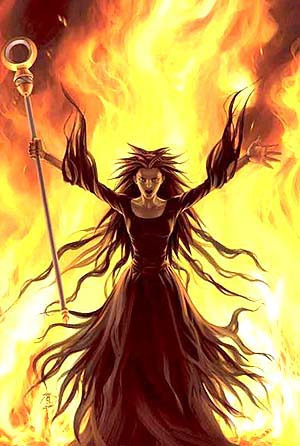
Now for the spells. How it works is that you have a number of spell known and every level you learn a new spell and can replace one you know with another. You get a number of spell slots each day and when you cast a spell you burn out one spell slot of an appropriate level and you cannot know spells of level higher than your higher spell slots. It is sadly more limited than Wizard who just learns the spells but it is much more reflective of Nico as a character. Dark magic is not something she learned, like Doctor Strange, it is her legacy but also an inherently chaotic force she struggles to control. She represents the unskilled but strong type of magic user, as opposed to Strange who has next to no raw power but incredible skill and knowledge.
You may feel a limited number of spells known clashes with Nico not being able to cast the same spell twice but there are ways around it in roleplay itself. Agree with your DM to describe a slightly different way the same spell works each time, maybe a spell that once held an enemy in place did it by paralysis, next time by a tentacle and another time arms of the dead rose from the ground to grab them? You can also operate on rules closer to A-Force, where Nico gets to cast the same spells using different words.
Also, mechanically if a spell allows a target a saving throw, difficulty for it is 8+ Your Charisma Modifier + Your Proficiency Bonus. If it requires you to make an attack, the attack modifier is said Proficiency Bonus + Charisma Modifier.
As for spell themselves, you get two level 1 spells and 4 Cantrips - minor spells that do not burn your spell slots when used. Nico’s problem is that she is versitile - she can do near anything she wants, meaning there is little point in declaring you to take specific spells. There are many great options in spells and I do not plan of going through each and every single one of them, because this post would be a novel. I will, however, list for every level some good options in the offensive, defensive, control and utility spells and let you make choices which are most the kind your take on Nico would use. I’m not your mom and casters in D&D are versatile, go wild, experiment, pick spells YOUR Nico would use.
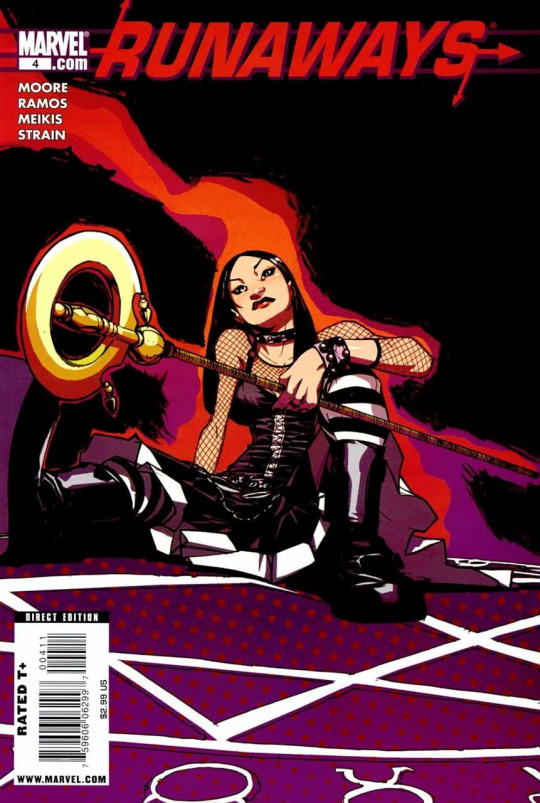
Anyway, I will list all most fitting spells of that level and whenever I mention you get a new spell, go back and refer to this. Also, if I will be referring to a spell “scaling” with you it means there are ways to boost it up as you advance in levels, usually by casting it from a higher spell slot. Each such spell has that mentioned in the description.
Cantrips:
Offensive: Booming Blade (which can also make it harder for your enemy to move), Shocking Grasp or Green Flame Blade all let you make an attack with an additional effect; Create Bonefire can double as “never have to worry about making a campfire for the night” spell; Infestation has a minor control effect and it is pretty terrifying.
Defensive: Blade Ward is great because it can give you damage resistance, which will be useful even at higher levels.
Control: None
Utility: Gust, Control Fire, Shape Water and Mold Earth all have a number of uses and each lets you control one of four elements to a degree that can be easily exploited; Prestidigitation has a great number of uses; Mending lets you repair minor things, Message allows you to contact others, Mage Hand is another surprisingly helpful one, Minor Illusion can double as a defensive spell and Light means you will never worry when exploring dungeons
Level 1 Spells:
Offensive: Ray of Sickness, which also doubles as a minor control effect as it can make the target poisoned; Witch Bolt, which stacks with your levels better than Magic Missle; Chromatic Orb which has a bonus of being able to be attuned to your situation and allows you to choose the type of damage the target does not have resistance or immunities;
Defensive: Shield allows you to temporarily grant yourself +5 AC as your reaction; Mage Armor gets you some extra AC and can be cast on your allies. False Life grants you temporary health points, which you’ll need since Nico is not exactly known for her durability; Fog Cloud is good to escape group of enemies
Control: Color Spray and Sleep can get your enemies temporarily blinded or unconscious and they stack with you.
Utility: Feather Fall can save you in a moment of need; Charm Person may let you survive some botched social encounter or convince a principal you’re Molly’s mother; Expeditious Retreat allows you to get in and out of close combat.
Now, for your Arcane Focus, which you can use to cast spells, pick a staff. This is far from the mighty Staff of One, but don’t worry, we will fix that in a moment. But first, we have some more Sorcerer goodies.
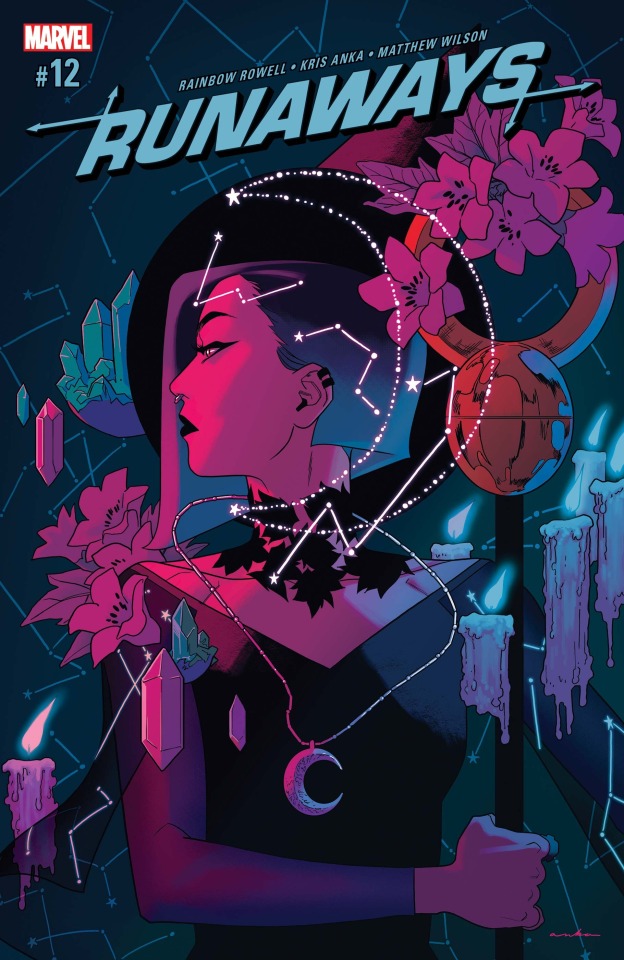
2nd Level Sorcerer gets an additional spell known and one more Spell Slot. We also Get Font of Magic. Which translates into Sorcery Points, their number always equal to your Sorcerer level. So far they can do one simple thing - you can spend them to regain spell slots - 2 for 1st, 3 for 2nd, 5 for 3rd, 6 for 4th or 5 for 7th level spell slots. You can also burn out a spell slot and gain number of Sorcery points equal to its level. You cannot have more Sorcery points than your Sorcerer level and you get them back to maximum after a long rest.
The real fun with that starts on 3rd Level of Sorcerer. That’s where you get Metamagic. How it works is that you get to pick two options that allow you to spend Sorcery Points while casting spells for extra effects. Out of the choices I recommend the fan-favorites Quicken Spell (for one sorcery point you can cast a spell with 1 action casting time as a bonus action instead) and Empowered Spell (for 1 sorcery point you can reroll a number of the damage dice for a spell equal to your Charisma modifier).
3rd Level is also where we get, aside a new Cantrip known, increase of our Spells known to 4 and a 4th 1st level Spell Slot, 2 2nd Level Spell Slots. Meaning we can now know 2nd Level Spells and here are some good suggestions:
Offense: Scorching Ray can damage several targets and Shatter is especially nasty against all kinds of constructs.
Defense: Blurr and Mirror Image make you much harder to hit and each is a solid choice but Invisibility is the real treasure here, with added huge utility bonus.
Control: Blindness/Deafness may replace Color Spray as you go on; Web is easy to trap a group of opponents; Crown of Madness and Suggestion lets you have limited control over the enemy; Darkness is a good save in trouble; Hold Person just gets an opponent off your back for a moment.
Utility: Alter Self has several uses beyond just making you look like someone else; Knock lets you open door and containers; Enhance Ability can help on a necessary saving throw or skill check; Enlarge/Reduce does exactly what you expect and if you doubt there is a ton of uses for that, ask Hank Pym; Detect Thoughts lets you play in Jean Grey’s playground for a moment; Levitate and Misty Step greatly help you move
Okay, now that we have covered basics of the Sorcerer, time to get ourselves a magic staff.

We will now be taking Warlock levels. Some metagame note: It is debatable when is a good moment to multiclass from Sorcerer into Warlock. Popular opinion is that if you take Warlock levels before hitting 5th level of Sorcerer, it will be a pain in the ass until you catch up. However, it all depends on the DM and the type of game you play. It might be perfectly fine with more forgiving DM to pick those levels after 2,3 or even 1 level of Sorcerer (in fact, I only didn’t do that because I wanted to explain Sorcery Points and Metamagic first), it might be a worst idea ever in more hardcore game. I recommend getting the feel of your game if you start at early levels.
The first level of Warlock means Pact Magic - Nico did made the deal with the One to not have to shed her own blood anymore after all. Good news is that it works exactly like Sorcerer’s magic and there is a lot of overlap - you can expend Warlock spell slots to cast Sorcerer Spells and vice versa and you can get Warlock Spells slots back using Sorcery Points or burn them for more Sorcery points. Bad news is your Warlock levels do not stack with Sorcerer for the purpose of determining the total number of spell slots and their level the way Sorcerer does with Wizard, Cleric or Bard. Good news is there is one crucial difference between how the spellcasting of both classes works. Sorcerer regains spell slots and Sorcery Points after finishing a long rest (usually 8 hours of in-game time). Warlock regains spell slots after a short rest. Meaning you can use your Sorcery Points to get higher level spell slots back or for metamagic and then burn warlock spell slots to get them back and get Warlock spell slots back after a short rest. This is a great way to ensure you won’t run out of spells early.
Warlock gets two Cantrips, but most of them overlap with the Sorcerer, aside of Eldritch Blast and Tool the Dead, each a pretty good offensive cantrip. Same goes for or the 1st Level. You only get one spell slot, but you have more options:
Offensive: Hellish Rebuke lets you do the most goth thing ever - snark at someone who hurt you in infernal and deliver such a burn you actually set them on fire.
Defensive: Protection from Good and Evil is the only one but it is pretty darn good (no pun intended), gives a number of helpful advantages against several types of enemies.
Control: Cause Fear lets you have Nico tap into her inner wicked witch and remind everyone how terrifying she can be; Hex allows you to curse your enemies with some good control and offensive effects
Utility: Unseen Servant has some nice uses and in a pinch, you can summon him behind an enemy’s back to give your Rogue flanking for Sneak Attack. There is also Healing Elixir, which would be a great healing spell but is FUCKING BROKEN. Not in a “doesn't work” way but in an “I replace the party cleric as a designated healer and also break the economy” way. So a savvy DM may ban it.
Warlock also gets an Otherworldly Patron, which will symbolize Nico’s deal with the One. We will pick Hexblade - a deal with powerful entity from Shadowfell granted you a special weapon (I mean, the One didn’t say where he is from, so...). As a Hex Warrior you gain proficiency with medium armor, shields and martian weapons, but we won’t need it - we’re here for its second ability. Whenever you finish a long rest you can choose one weapon that you are proficient with and lacks a two-handed property and from now on you can use your Charisma for attack and damage rolls with that weapon. I can hear some of you saying “but wait, Staff of One is clearly two-handed” and while you are correct, there is a little trick for you. The Rules as Written state that the weapon cannot have a “two-handed property” meaning it is not described as two-handed by the handbook. And quarterstaff is not - it is versatile instead, meaning you can choose to use it as either one or two-handed weapon as you please. But even if the DM would not agree with that, do not worry, we will get past that little problem in just a moment.
Hexblade also learns a curse - it allows you to curse a target as a bonus action, giving you a bonus to damage against it, a better chance of critical hit and lets you heal some if you kill them. Which overlaps nicely with both abovementioned Hex spell AND with two extra spells added to your list (since other two you already had from Sorcerer) - 1st level Wrathful Smite and 2nd Level Branding Smite, each dealing extra damage to a hit and some additional effects that impose extra penalties on your enemies.
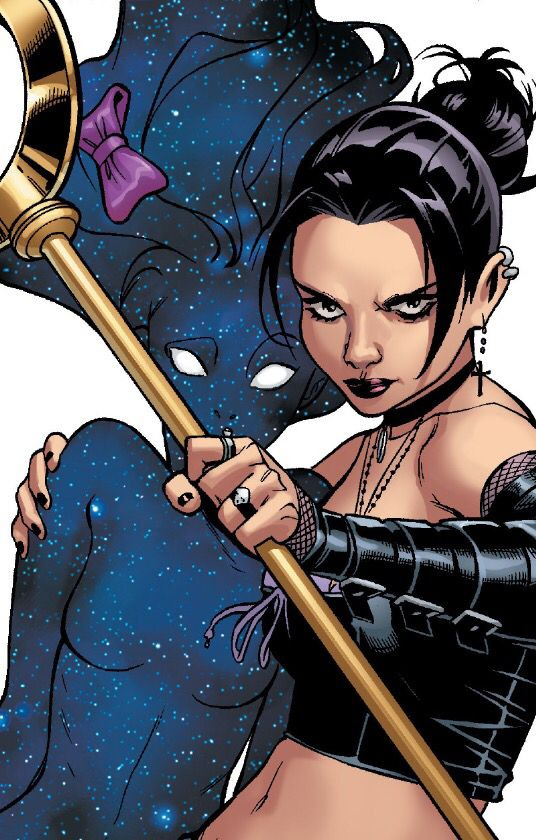
All pretty useful when you need to protect an adorable cosmic being, btw.
2nd Level Warlock gets an additional spell known and an additional spell slot. You also get Eldritch Invocations - you can select two bonuses from a list and every time you take a level of Warlock you can replace one of the Invocations with another. Whichever you choose depends on how you want to play Nico, but here are some suggestions - if you want to focus on long-distance combat Agonizing Blast, Eldritch Spear, Grasp of Hadar, Lance of Lethargy and Repelling Blast each let you customize your Eldritch Blast. If you want to actually have Nico in the first line, aiding her allies then Armor of Shadows and Fiendish Vigor let you cast on yourself a helpful minor defensive spell (Mage Armor and False Life, respectively) at will without using spell slots and if you go for control then Thief of Five Fates allows you to once between every long rest to spend a Warlock spell slot to cast Bane, a spell normally available to Bards and Clerics, that can weaken your enemies. I advise picking wisely since on next level we will actually make use of the switching option.
3rd level Warlock gets to learn 4th spell and gets to choose 2nd level spells. Most of these overlaps with Sorcerer and the two special ones - Flock of Familiars and Ray of Efleebement - have mostly control use.
Warlock also gets a Pact Boon and we will choose Pact of the Blade. It allows you to summon a magical weapon that you are always proficient with that can be of any type except for bows and crossbows. You can also transform any weapon into your pact weapon, meaning if you ever come across magic quarterstaff you really like (or even make/get one made), you can turn it into your Pact Weapon and use to roleplay one of Nico’s staff powerups like Witchbreaker. And here is where I would recommend switching one of your Warlock invocations for Improved Pact Weapon (which we couldn’t take before hitting this level), which removes that “no bows or crossbows” limitation, grants your pact weapon +1 bonus to attack and damage unless it already has one and from now on you can use said weapon as your arcane focus for casting spells. And it specifically states it overrules Hex Warrior limitations - you can always apply Hex Warrior bonuses to the Pact Weapon no matter what it is.
This venture into Warlock let us create Nico’s own Staff of One - summon a magic quarterstaff to cast spells and if someone is stupid enough to try to get their hands on you or your family, you can nerf them with Hex and Hexblade Curse and then beat up or even smite with the same staff, to remind them this witch is far from helpless.
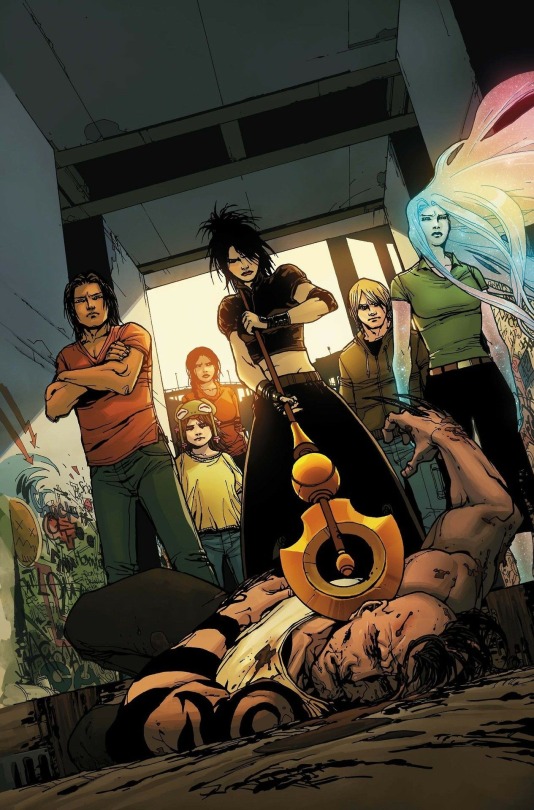
As Daken here helpfully demonstrates.
We go back to the Sorcerer for the rest of this build. 4th level Sorcerer means a new Cantrip known, a new Spell known and a new 2nd level Spell Slot. We also get an Ability Score Improvement and our priority is to maximalize Charisma so we will take +2 to it.
5th Level means a new Spell known and 2 new spell slots of 3rd level. So let us go through the options
Offensive: Erupting Earth, Fireball, Sleet Storm and Lightning Bolt are all an area of effect spells that let you hit hard a whole group of enemies with fury of the elements; Melf’s Minute Meteors is something more focused.
Defensive: Blink and Gaseous Form can save your life in a pinch; Counterspell and Dispel Magic let you do something against other masters; Protection from Energy meanwhile can help you or someone else survive, say, things like your own area spell; Wall of Water is good against melee attacks.
Control: Fear and Hypnotic Pattern may temporarily stop some opponents, while Enemies Abound can turn one of them against the other; Slow slows down your enemy while Haste is gonna make one of your more combat-oriented allies love you; Stinking Cloud makes everyone in the area of effect sick.
Utility: clairvoyance lets you keep an eye on your home or check out for nearby dangers; Fly does exactly that; Daylight gets rid of darkness; Water Breathing and Water Walk are likely self-explanatory; Major Image is an illusion with a lot of use.
6th Level Sorcerer learns a new spell and gets a third 3rd level spell slot. You also gain Wild Magic feature - Bend Luck, which allows you to choose an enemy or an ally and as a reaction spend two Sorcery points to apply a 1d4 penalty or bonus to their attack roll, saving throw or ability check.
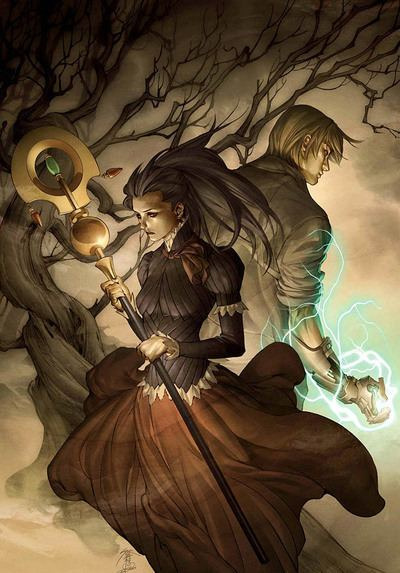
7th Level Sorcerer gets to learn 4th level spells
Offense: Blight deals necrotic damage to target; Ice Storm is another, now ice-based area of effect ofensive spell; Storm Sphere and Vitroic Sphere are each a concentration-based area of effect offensive spell and so is Wall of Fire, which also has defensive uses.
Defense: Stoneskin gives you resistance to nonmagical attacks, Greater Invisibility is better version of an already good spell
Control: Banishment lets you put an enemy in a time-out or banish them completely if they’re from another dimension; Confusion can cause chaos among the enemies; Dominate beast lets you take over control over a beast; Watery Sphere traps enemies inside itself, Polymorph is a great spell for turning one tricky enemy into something less frustrating to take down or weak ally into a combat monster or Old Lace into a puppy.
Utility: Dimension Door lets you teleport with limited range.
8th Level Sorcerer - more spells known and spell slots and also an Ability Score Improvement, you should be able to cap your Charisma by now.
On 9th level, you get access to 5th Level Spells
Offense: Cloudkill, Cone of Cold and Insect Plague - evn more spells dealing damage in large areas; Immolation just SETS SOMEONE ON FIRE; Animate Objects turns a bunch of items or furniture into your servants who may fight for you.
Defense: Wall of Stone sounds, well, self-explanatory really
Control: Control Winds has several uses for defense, offense or just to make your enemy’s life harder; Dominate Person and hold Monster are better versions of spells we discussed already;
Utility: Telekinesis lets you move objects, teleportation circle can offer some help on your travels;
10th Level means more spells and you get another Metamagic. What to pick depends on what spells you selected. If you picked a lot of offensive and control spells affecting a whole area, most of them allow a saving throw and Careful Spell lets you for 1 Sorcery point to pick a number of creatures within the area up to your Charisma modifier, and make them automatically succeed said saving throw, meaning you no longer hit your allies. If you picked a lot of single-target spells, Twinned Spell lets you spend Sorcery points equal their level to make copy their effects on a second target. Distant Spell for 1 Sorcery point increases the distance of a spell so that if your teammate turns into a giant crab, you can deal with it at safe distance.
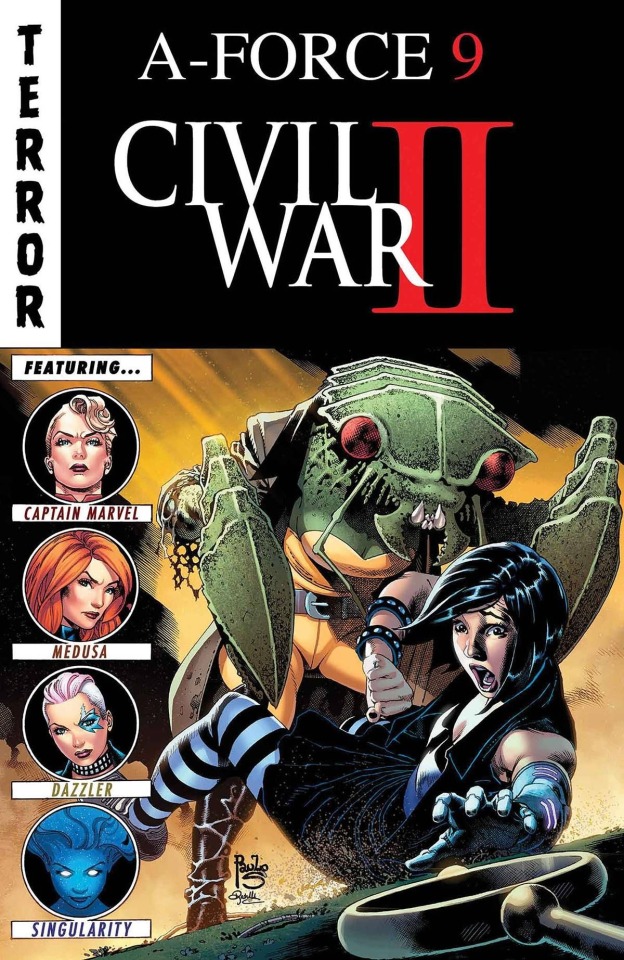
11th Level of Sorcerer lets you learn 6th Level Spells
Offense: Chain Lighting lets you hit up to 3 targets with lightning; Disintegrate hits one target and can deal even 100 force damage; Circle of Death is your area of effect murder spell of the level; Sunbeam hits all targets within a line for Radiant damage
Defense: Globe of invulnerability cuts off the target from rest of the battlefield, it can be both a life-saver and a control spell;
Control: Eyebite makes it that as long as you maintain the spell each turn you can grant some nasty things on your enemies by simply looking them in the eye; Mass Suggestion is like good old Suggestion for multiple targets.
Utility: Move Earth lets you manipulate the terrain around you; True Seeing has a number of uses, surprisingly
Investitures - there are 4 spells called that way, of Flame, Ice, Stone and Wind. Each one has a combination of defensive, offensive and control effects in one package.
12th Level Sorcerer gets more Spells and an Ability Score Improvement but we will pick a feat. Inspiring Leader lets you spend 10 minutes on boosting the morale of your allies. Choose up to six creatures within 30 feet, including you, who will get temporary hit points equal your level + your Charisma Modifier and you cannot give them the same bonus again until they finish long rest. Most of the players roleplay this as giving a speech for 10 minutes but it’s not said you must do it that way and a 10-minutes long speech in a game is gonna be a pain in the ass. You can easily use this to roleplay Nico being caring dean mother to her teammates.
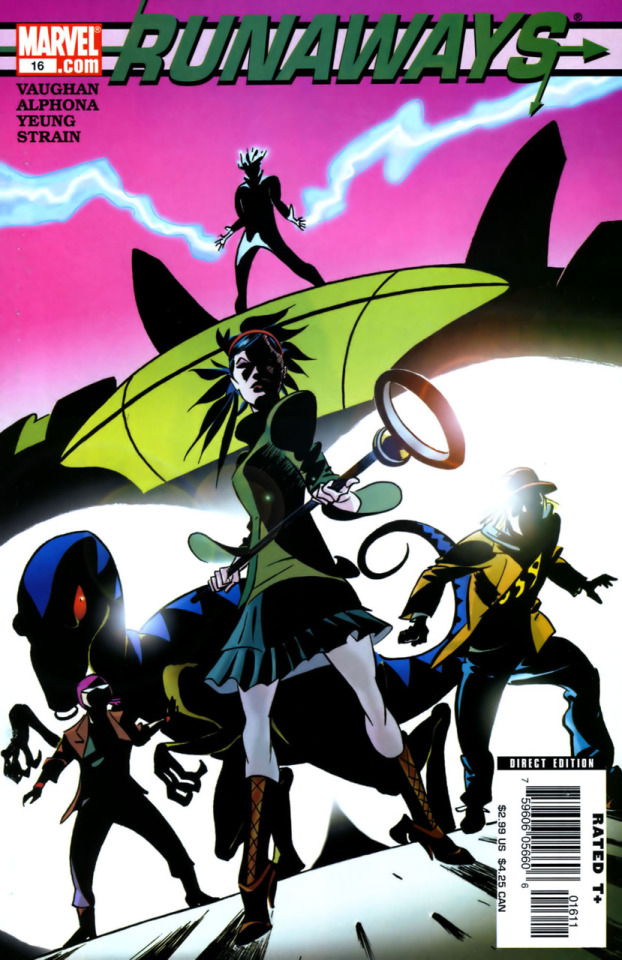
13th Level Sorcerer learns 7th level Spells
Offense: Delayed Blast Fireball lets you cast Fireball with time for your allies to run away from the area; Fire Storm is, well, a storm of fire that you may be able to place in a way that avoids said allies; Finger of Death deals necrotic damage and slain target raises as a zombie; Prismatic Spray may hit an enemy with wide array of damage or effects
Defense: none
Control: Reverse Gravity is another one in a long line of “make your enemies’ life hell” area of effect spells, bonus points if Nico starts singing that one spell from Wicked.
Utility: Teleport, especially climactic with its possibility of mishap; Etherealness allows you to reach places you shouldn’t with an extra defensive effect; Plane Shift lets you take the entire team to another dimension or send an enemy on a such trip.
14th Level gives you a Wild Magic Feature, Controlled Chaos. From now on when you roll on Wild Magic Surge Table, you can roll twice and choose one result.
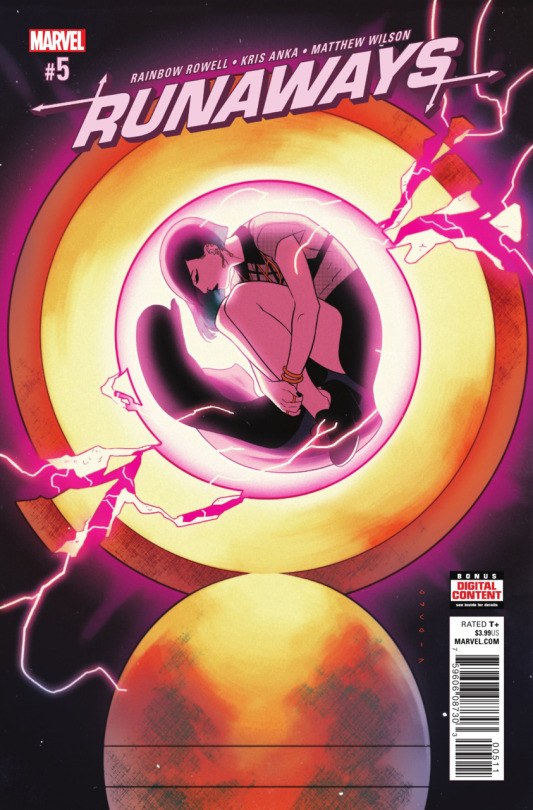
15th Level Sorcerer lets you earn 8th Level Spells
Offense: Abi-Dalzim's Horrid Wilting, Sunburst and Incidentiary Cloud are even more powerful area of effect spells to hurt your enemies. Warning, if you pick the first, you WILL mispronounce it at some point as “Horrid Writing” and lead to the Hitchhiker’s Guide to the Galaxy jokes at the table.
Defense: none
Control: Power Word: Stun lets you stun any target with less than 150 hp; Earthquake is the most overkill way to terrorize your enemies with some possible damage effect; Dominate Monster lets you take control over someone but remember - it has nothing to do with BDSM so don’t try it on Karolina during your kinky nights.
Utility: none
16th Level Sorcerer gains an ability score improvement, boost Constitution and remember it gives you bonus hit points for each level, including retroactively, adding 16 to your hp. Tough feat might have given you twice as much but we also need to boost up your Concentration and Constitution Save.
We will cap on 17th Level Sorcerer, grab another Metamagic of your choice and one 9th Level Spell. By which I mean grab Wish, Wish is fucking awesome and it fits perfectly with Nico’s “price to power” thing. If you exchange one of your other spells you can pick another 9th Level Spell (but remember, you only have one Spell Slot per long rest for 9th level spells) so choose one: Power Word: Kill lets you flat out murder someone with 100 hp or lower. Meteor Swarm is an area of effect offensive spell that bombards the area with meteors because I guess an Earthquake wasn’t over the top enough. Time Stop is sadly nerfed, but you can use it in a pinch to run away, no pun intended, buff or heal yourself

So we did it. Nico is a Warlock 3/Sorcerer 17 so now let us take a look at our pros and cons
For the pros, you have the way with spells that you think fits Nico’s character best and, if you choose right you can be a devastating force capable of taking down many enemies, control the battlefield or have a hefty dose of utility spells at your disposal. You have some additional versatility with Sorcery Points and Warlock spell slots, keeping you in battle a bit longer. You are a skilled party face, able to act as the leader to your group. You can also add your friends in direct combat with Hexblade abilities and your HP should on average get beyond the dreaded Power Word: Kill range.
For the negatives, your melee effectiveness is not THAT great, merely a last resort thing and you do not have that many spells that can improve it. Your strongest offensive spells are almost all likely to be the area of effect, meaning you need to be careful and your Wild Magic can as easily help as mess things up. Finally, we didn’t cap Constitution, meaning your concentration, Constitution save and health points are not as good as they could be. Finally, as a sorcerer, you cannot wear armor and your dexterity is not the best so your AC is meek and you need these defensive spells. However, you still are gonna be a great supporting caster capable of acting in second or even first line. Have a friend who is a good front-line combatant to shield you and add some punch to your magic and you should be a force to be reckoned with.

Get it?
As always, feel free to drop any constructive criticism or say if you tried this build in a game or have some suggestions. Also, check out my previous Cassandra Cain build.
- Admin
22 notes
·
View notes
Text
Action Points: Converting to 5th Edition...
WHAT ARE ACTION POINTS?
Action points give characters the means to affect game play in significant ways, by improving important rolls or unlocking special abilities. Each character has a limited number of action points, and once an action point is spent, it is gone for good.
ACQUIRING ACTION POINTS
A beginning (1st-level) character starts the game with 5 action points.
A character above 1st level starts the game with a number of action points equal to 5 + 1/2 his or her current character level.
Every time a character advances, they gain a number of action points equal to 5 + 1/2 his or her new character level.
Action Points and Existing Games
Adding action points to an existing campaign is easy, since characters don’t need to make any special changes.
Each character simply gains a number of action points equal to 5 + 1/2 his or her current character level.
NPCs and Action Points
Most NPCs probably shouldn’t have action points, due to the added complexity this would create.
In the case of important villains or other significant characters, however, the DM may award them an appropriate number of action points to use against the player characters.
A number of action points equal to 1/2 the NPC’s level is a good baseline.
USING ACTION POINTS
You can spend 1 action point either to add to a single d20 roll, to take a special action, or to improve the use of a feat.
You can spend 1 action point in a round.
If you spend a point to use a special action, you can’t spend another one in the same round to improve a die roll, and vice versa.
Add to a Roll
When you spend 1 action point to improve a d20 roll, you add the result of a 1d6 roll to your d20 roll (including attack rolls, saves, checks, or any other roll of a d20) to help you meet or exceed the target number.
You can declare the use of 1 action point to alter a d20 roll after the roll is made, but only before the DM reveals the result of that roll.
You can’t use an action point to alter the result of a d20 roll when the result is a Critical Fail or Critical Success.
Depending on character level, a character might be able to roll more than one d6 when they spend 1 action point.
Action Point Dice Table
Character Level Action Point Dice Rolled
1st - 7th 1d6
8th - 14 2d6
15th - 20th 3d6
If so, apply the highest result and disregard the other rolls.
A 15th-level character, for instance, gets to roll 3d6 and take the best result of the three.
So, if they rolled a 1, 2, and 4, they would apply the 4 to their d20 roll.
Special Actions
A character can perform certain tasks by spending an action point.
In addition to the actions described below, some feats might allow the expenditure of action points in order to gain or activate specific abilities, at the DM’s option.
Activate Class Ability: A character can spend 1 action point to gain another use of a class ability that has a limited number of uses per day. For example, a barbarian might spend an action point to gain another use of her Rage Ability, or a paladin might spend an action point to gain an addition use of her Smite Ability.
Boost Defense: A character can spend 1 action point as a free action when fighting, as part of a Combat Encounter.
This gives them greater benefits for fighting for the entire round, giving them a +3 bonus to their AC until their next turn, and Advantage on Initiative Rolls and Dexterity Saving Throws, until their next turn.
Emulate Feat: At the beginning of a character’s turn, they may spend 1 action point as a free action to gain the benefit of a feat that he or she doesn’t have. They must meet the prerequisites of the feat.
He or she gains the benefits of that feat until the beginning of his or her next turn.
Extra Attack: During any round in which a character takes a full attack action, they may spend 1 action point to make an extra attack at his or her highest attack bonus.
Action points may be used in this way with both melee and ranged attacks or spells.
Spell Boost: A character can spend 1 action point as a free action to increase the effective caster level of one of his or her spells by 2.
They must decide whether or not to spend an action point in this manner before casting the spell.
Spell Recall: Spellcasters who prepare their spells in advance can spend 1 action point to recall any spell just cast.
The spell can be cast again later with no effect on other prepared spells.
This use of an action point is a free action and can only be done in the same round that the spell is cast.
Spellcasters such as clerics, sorcerers, wizards, warlocks and bards can spend 1 action point to cast a spell without using one of their spell slots.
This use of an action point is a free action and can only be done as the spell is being cast.
Stable: Any time a character is dying, they can spend 1 action point to become stable.
Improving Feats
The use of action points opens up a whole range of possible feats.
However, it’s easier on characters simply to improve existing feats to take advantage of action points—that way, characters needn’t spend their precious feat slots simply to gain the ability to use their action points.
But below are a few examples of how actions points can be used with new feats.
Unless otherwise stated, each effect requires a free action to activate and lasts 1 round.
Blind-Fight: You can spend 1 action point to negate your miss chance for a single attack.
Combat Expertise: You can spend 1 action point to double the bonus to Armor Class granted by the feat.
Dodge: You can spend 1 action point to increase your bonus to Dexterity Saving Throws by +2.
Improved Critical: You can spend 1 action point to increase your "critical threat range" from 19–20 to 18–20, from 17–20 to 15–20, or from 15– 20 to 12–20, including the effects of other benefits from class, racial or archetypal features.
Improved Initiative: You can spend 1 action point to double your bonus on initiative checks.
Power Attack: You can spend 1 action point to double your bonus on damage rolls.
Spell Focus: You can spend 1 action point to increase to Save DCs for spells or other magical effects by +2.
Spell Penetration: You can spend 1 action point to reroll 1 damage die roll for a magical effect of your creation.
BEHIND THE CURTAIN: ACTION POINTS
Action points give players some control over poor die rolls.
Although this has little effect in an average encounter, it makes it a little more likely that characters will survive extremely challenging encounters and less likely that a single character will fall to what would otherwise be a balanced foe because of bad luck.
A reserve of action points lets even careful players expose their characters to more risks, heightening the game’s tension and opening the door to even more heroic action.
This variant also makes it less likely that an entire adventuring group will fall victim to one powerful effect.
Action points also make it more likely that the use of a character’s most potent abilities will be successful.
For example, although its overall effect on an encounter might be minimal, few things frustrate a player more than missing with an attack— an event that becomes less likely when using action points.
That said, action points can also lead characters to routinely get in over their heads (relying on action points to save themselves), and for DMs to unconsciously increase the difficulty of encounters (since characters are more likely to succeed against foes of equal power).
This is fine as long as the characters have a reserve of such points to spend—but if they run out, encounters that would otherwise be merely challenging can become incredibly deadly.
Keep the number of action points available to your players in mind when designing encounters.
For DMs who are worried that action points increase the power level of characters without an offsetting cost, there’s an easy solution.
Just think of each action point as a one-use magic item with a broad range of possible effects.
With that analogy, it becomes easy to justify reducing the amount of treasure awarded to balance out the accrual of action points.
Note that this is merely a tool for DMs interested in carefully monitoring character power levels; action points should never be for sale.
An action point is roughly equivalent to a magic item worth 100 gp per character level (since the higher a character’s level, the more potent the effect).
#Action Points#Point System#dungeons and dragons#dungeons & dragons#dnd 5e#dnd 5e homebrew#dnd 3.5#dnd 4e#community#comments#communityresponse#CreativeRogues#variant#homebrew#homebrew rules
175 notes
·
View notes
Text
Title Dicey Dungeons Developer Terry Cavanagh, Marlow Dobbe, chipzel Publisher Terry Cavanagh Release Date August 13th, 2019 Genre Strategy, Dungeon Crawler Platform PC Age Rating N/A Official Website
I decided to play Dicey Dungeons at E3 this year on a whim. At that time, I had no idea it was by the madman behind VVVVVV, Terry Cavanagh, or that it had music by chipzel or art by Marlow Dobbe. All I knew was I liked the rogue genre and it had giant dice fighting through dungeons. That was enough to pique my interest. But now that I’ve been playing the game pretty much non-stop since I got the review code, how do I actually feel about Dicey Dungeons? Let’s roll the dice and find out.
This slideshow requires JavaScript.
The setting of the game is a sort of twisted, infernal game show. It’s run by none other than Lady Luck, and as gamblers worldwide can attest, she’s a real bitch. She transforms all the contestants into giant dice and then hurls them through several floors full of monsters and lackeys to win their heart’s desire. Even when they win, the odds are against them, at least until you are able to change the mind of her head minion, the Jester. Then things start to change, and you begin to see a way out. But it’s a long road to that point, and it’s full of delightful insanity.
This slideshow requires JavaScript.
At the beginning, you can only select the Warrior. He’s the most basic and easy to understand character, but you’ll eventually unlock 5 others (well, technically 6). There’s also the Thief, Robot, Inventor, Witch and Jester. The 7th kinda sorta character is the Bear, but you can only play as him by stealing a magical potion as the Thief. While the Warrior is best for starting out, each other character gets progressively more complex than the one before it, and the difficulty of playing them is denoted with stars. The hardest to play is the Witch, and she’s no joke. This review would have been done sooner but I had this stupid itch to beat the game as her once, and several hours later, I still haven’t succeeded.
This slideshow requires JavaScript.
Which brings us to the difficulty of Dicey Dungeons. This is not for the faint of heart. Not only are the odds stacked against you, they’re so stacked you can easily die in the first floor of a dungeon. Considering there’s only 6 floors total, that’s a challenge. But it’s not an unreasonable one, so long as you comprehend each character’s unique mechanics. Though they’re all very different, they share some similarities. Each one attacks by using dice to activate attacks and cast spells. Another commonality is the Limit Break. After taking enough damage, this meter will be charged, and you’re given the opportunity to use a powerful special ability. For the Warrior, you get to deal double damage with a Fury attack, whereas the Thief uses Unlucky Roll to create 4 extra dice with a value of one each. Each character also levels up as you defeat enemies, granting you more dice to use each turn of combat, as well as increasing your base health. Other than that though, things are gonna vary dramatically.
This slideshow requires JavaScript.
Each character is essentially its own unique way to play Dicey Dungeons, and even has unique equipment they’re more likely to find in chests strewn throughout the labyrinth. Take the Thief for example. He lacks the impressive damage output of the Warrior, but trades it for reusable multi-attack skills such as the Dagger. He essentially needles opponents to death, whittling them down 1 HP at a time. He’s also very adept at using Poison skills. But where he gets really interesting is his ability to randomly steal an attack from enemies at the start of every turn. If you’re fighting a snowball hurling snowman, the Thief will get to toss snowballs back at him. Or take the Inventor instead, who deconstructs a piece of her equipment each turn to build a new free to use Gadget. Then there’s the Witch, who has a book of spells she can place and cast at will, so long as she rolls the proper dice corresponding to a specific spell value. It’s a very, very complex game, despite the basic loop being pretty simple. You grind through 6 floors, fight enemies, level up, choose new equipment and try and beat the boss at the very end. The foes and bosses you face are completely random too, and there’s something like 60 unique flavors. If nothing else, you won’t get bored playing Dicey Dungeons at all.
Roll On for Page 2 ->
This slideshow requires JavaScript.
As you progress through each level of the dungeon, you’ll have a few things to make your life easier. One are the aforementioned chests that contain equipment to keep you breathing, such as curative scepters, powerful shields and sharp swords. There are also random apples you can gobble down as you wander, restoring a few health. But what really has the potential to help are the vendors you encounter. One is just a standard shopkeep, and you can spend coins you earn from defeating foes to buy new items. Another trades one of your items for one of theirs, for no price. The last, and my favorite, is the blacksmith. They will upgrade any piece of equipment for free, enhancing their effects and sometimes shrinking their size so you can fit more stuff in your backpack. To store it, you rearrange blocky representations of your equipment from the pause screen.
This slideshow requires JavaScript.
If that wasn’t enough, there’s other aspects that spice the game up. One are Parallel Universe Episodes, which are unique challenges with special rules for each character. There’s an early one where the Warrior starts out with two massively powerful axes, but is also Cursed, meaning there’s a guarantee one attack will fail each turn. These Episodes really make things interesting, and are there for you when you feel you’ve gotten too good at the game. There’s also something called Bonus Round, which are the challenging final Episodes you’ll unlock for each character. And as you play, you’ll satisfy challenges, which can be redeemed for collectible trading cards for all the foes in the game. And if all that wasn’t enough, there’s always the final battle against Lady Luck herself.
This slideshow requires JavaScript.
In case it wasn’t readily apparent, I’m badly addicted to Dicey Dungeons. A typical successful playthrough can take anywhere from 10 minutes to a half hour, but you’ll be dying a lot in between your rare successes. I loved playing as the distinct characters, and discovering techniques to defeat the varied bestiary in the game. You only need a mouse to play the game, and you drag and drop dice into slots to activate your attacks. Some attacks require odd rolls, others require even, some have a minimum or maximum value they will accept, and others eat a bunch of dice to unleash a powerful effect. My mind is boggled by the amount of elements in the game, though I do find I internalized a lot of it from just playing again and again. Though most enemies can be defeated relatively easily, the bosses are pretty challenging. One example is a goth knight who charges her powerful shield, deflecting attacks and then ramming you with it. Or take the diabolical girl scout Madison, who looks like a lightweight and can defeat you in a couple turns. A personal favorite is Buster, the dragon, who burns all your dice each turn, causing you harm whenever you use them. I keep finding new things to enjoy in Dicey Dungeons, which helps offset my frustration when I die again and again. And keep in mind I consider myself a veteran at the rogue genre, taking great joy in playing games like The Binding of Isaac repeatedly, and nearly 100%ing Guild of Dungeoneering. So be ready for a lot of pain.
This slideshow requires JavaScript.
Aesthetically, Dicey Dungeons is a very pleasing game. Each and every character is colorful and cartoony, and bursting with personality, thanks to the art stylings of Marlowe Dobbe. There is a ton of creativity here, from buff snowmen to hungry vacuum cleaners to demonic marshmallows. The music is no slouch either, thanks to the tremendous skill of chipzel. It’s a lively mix of chiptunes with lots of different styles thrown in for good measure. Though I will say, I accidentally spent a few hours playing the beta of the game, and found I liked the music better in that version. Probably cause everything was more bombastic and loud. However, I in no way miss the cruel laughter of the audience whenever my life was nearly reduced to zero. There’s also plenty of great sound effects for the various foes you fight, and wonderfully strange gibberish that is captioned for Lady Luck. She sometimes sounds like she’s saying “stinkalee”, and that made me chuckle on more than one occasion.
This slideshow requires JavaScript.
All in all, I can safely say I’m a fan of Dicey Dungeons. I respected Terry Cavanagh after playing VVVVVV, but this adventure is no slouch either. For only $14.99, there’s a ton to experience in the game, and it’s beyond easy to get fully immersed in the art and tunes as hours slip past. My only minor complaint is that this game is not for everyone, and if you’re not patient and ready for the difficulty, Dicey Dungeons can be pretty daunting. But for fans of the rogue genre, this is a must own. Now if you’ll excuse me, I still have tons of challenges and Episodes to beat, as well as all those shiny Steam achievements to collect!
[easyreview cat1title=”Overall” cat1detail=”” cat1rating=”4.5″]
Review Copy Provided by Publisher
REVIEW: Dicey Dungeons Title Dicey Dungeons
0 notes
Text
The Character Forge: How to Play as Dark Magician and Dark Magician Girl in DnD 5e
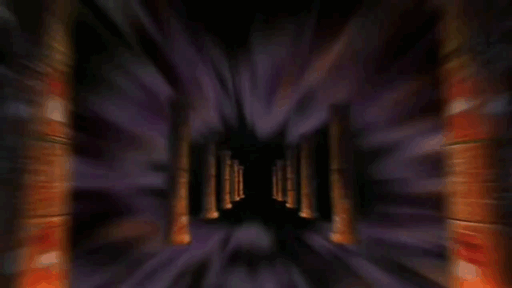
This is a rather unusual build option, as these aren’t technically characters in the Yugioh series. However, I consider it a fun and unique challenge to try and build them. Dark Magician and Dark Magician Girl are the ace cards in the deck of Yami Yugi. Though in season 5 the anime decided they were the spirits of the Pharaoh’s high priests trapped as duel monsters that still serve their king in death. So that’s a fun thing to think about the next time you play one of these cards.
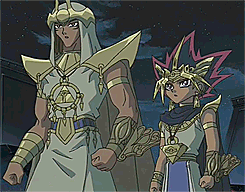
A Heroic Spirit
What race you choose is probably going to depend on which version you want to play. If you want to play who they were before they died, Mahad and Mana were ordinary humans with no superhuman abilities beyond the study of magic. So normal Humans works for who they once were. If you want to play as the duel spirits they became, you could choose Kalashtar because the Dark Magician is the bond of the high priest Mahad with the Illusion Magician spirit. Kalashtar is a race whose body is split between a host and a dream world spirit. Dream world, Duel Monster Spirit World. Close enough. They are also tasked with guarding and serving the Pharoah loyally, which has lowkey guardian angel traits, so Aasimar is a possibility. It’s a bit silly, but they are synthetic beings. Just holograms really. They could be Warforged since they aren’t actually real or alive. Just computer code and projected images of light as duel monsters. They could also be Variant Humans because they’re Shonen anime characters, and the spirits of former humans.
Honestly, they have no alignment and little personality. Make them however you want and go from there. I have never actually seen season 5, so I don’t know the personalities of Mahad and Mana.
For background, Mahad is a high priest and Mana is his pupil. Mahad and Mana are both Acolytes. Dark Magician is the ultimate wizard in terms of attack and defense, so Sage is appropriate, while the obscure (but I think it’s legit?) Student of Magic is great for Dark Magician Girl.

Powers and Abilities
The Dark Magician’s primary spell is the Dark Magic Attack, and the Dark Magician Girl casts Dark Burning Attack.
As Mahad, he had the ability to summon duel spirits to fight on his behalf, conjuring them through large stone tablets. Mahad also possessed the Millennium Ring, which points you in the direction of whatever you’re trying to find, and lets you place and remove souls from bodies.
Support Cards:
Dark Burning Attack: Destroy all enemy facedown monsters
Dark Burning Magic: Destroy all enemy cards.
Dark Magical Circle: Add other Dark Magician support cards to your hand.
Dark Magic Attack: Destroys all enemy Spells and Traps
Dark Magic Expanded: one monster gains +1000 ATK and ignores enemy spells
Dark Magic Inheritance: Banish 2 spells to draw 1 DM support card from deck.
Dark Magic Twin Burst: DM gains ATK of all DMG on the field and in Graveyard.
Dark Magic Veil: Pay 1000 LP to summon a dark spellcaster
Dark Renewal: Sacrifice enemy monster and your caster. summon dark caster.
Illusion Magic: Sacrifice your spellcaster. Add Dark Magician to your hand.
Magic Formula: DM’s Spellbook. Increase DM or DMG ATK by 700 points.
Magical Hats: Dark Magician becomes hidden beneath 1 of 4 magic hats.
Magical Objection: Counter enemy spell, trap, or effect and destroy that card.
Magician’s Circle: when foe summons, you and foe can summon a caster
Magician’s Defense: Take half damage while you control a spellcaster.
Magician’s Navigation: Summon DM from hand and dark caster from Deck/GY
Mystical Box: Dark Magician trades places with another monster.
Thousand Knives: Destroys 1 enemy monster
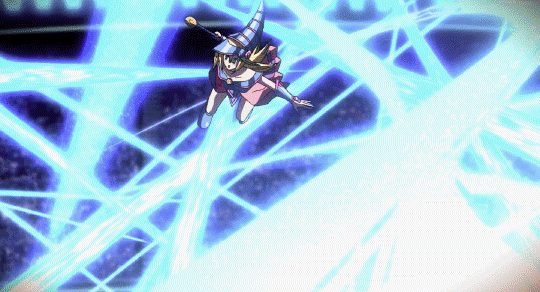
Other Common Cards
Change of Heart: Take control of enemy monster for 1 turn.
Dark Hole: Destroy every card on the field.
Dian Keto, the Cure Master: Gain 1000 Life Points.
Magic Cylinder: Bounce enemy attack at enemy’s Life Points.
Magic Jammer: Counter 1 enemy spell card.
Mirror Force: Bounce enemy attack, destroy all ATK position enemy monsters.
Monster Reborn: Summon 1 monster from either Graveyard.
Mystical Space Typhoon: Destroy 1 Spell or Trap card.
Negate Attack: Portal sucks up enemy attack, opponent battle phase ends.
Raigeki: Destroy all of your opponent’s monsters
Reverse Trap: Buffs and Debuffs switch. Buffs weaken, Debuffs strengthen.
Spellbinding Circle: Enemy monster -700 ATK. Cannot attack/change positions.
Swords of Revealing Light: 3 gleaming swords, enemy can’t attack for 3 turns.
Trap Hole: Create pit trap. Destroy monster with 1500 ATK or more.

Class is in Session
Cleric
Arcana: As Mahad and Mana were priests, this is a way to incorporate that religious background with their current powers.
Sorcerer
Divine Soul: Similar to Arcana, Divine Soul blurs the line between magic and religion, and allows Dark Magician to pull power from the holy spirit of Mahad residing within him. Since both Dark Magician and Dark Magican Girl float, the wings this subclass gives at level 14 could be flavored as simply allowing these duel spirits to fly/float without the wings being visible.
Shadow: They are the DARK magicians. Their signature spells are DARK Magic Attack and DARK Burning Attack. Pretty self-evident.
Warlock
Celestial: Again like Divine Soul and Arcana, this option connects Warlock with religion, but the subclass has some Radiant flavor which is a little unusual for the DARK Magicians.
Wizard
Conjuration: When Mahad lived, he used his Millennium Ring and magic powers to conjure the spirits of Duel Monster tablets to play shadow games.
Lore Mastery: He’s “the ultimate wizard in terms of attack and defense”. It stands to reason that his understanding of magic would run so deep that he could alter and bend it to his will. Especially to turn any spell he casts into Necrotic damage for his dark magic attacks.
Theurgy: Mahad was the high priest. So, he could have been a wizard who had studied the religious magic of his day to obtain his powers and to cast both Cleric and Wizard spells with one stat.
War Magic: The ultimate wizard in terms of attack and defense is probably going to be extremely powerful in a fight, so having a build that’s made to fight is right up his alley.
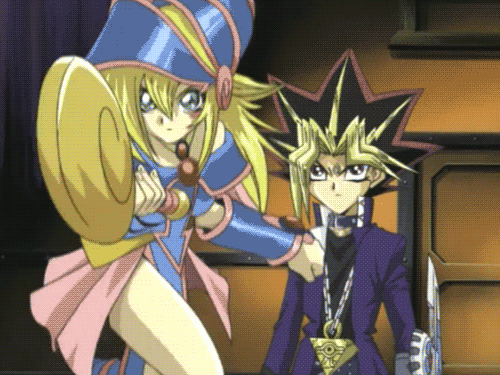
How to Play as Yugi Mutou
Before making this post, I’d tried to make Yugi as a potential build. However, an obstacle I encountered was that I had Yugi as a Conjuration Wizard, and there simply weren’t enough Wizard spells that summoned creatures to fight on your behalf. However, if you combine that summoning focus of Yugi with the magical capabilities of Dark Magician or Dark Magician Girl, and treat them as his Deck Master, they can work together to fill out Yugi’s spell list with DM and DMG spells and fight side by side as effectively one character.

Stats and Proficiencies
In order to be the ultimate wizard in terms of attack and defense, Dark Magician needs the absolute maximum Intelligence and Constitution stats. He needs to be able to deal serious magical damage and shrug off enemy spells. During Yugi and Joey’s duel against Para and Dox, the Dark Magician did a front flip in what seems like medium armor. That shows quite a bit of Dexterity. Beyond that, fill out the other three stats or dump them as you see fit. However, I will admit, the Dark Magician Girl does seem more charming than her mentor, and could be a Sorcerer who casts with Charisma instead of Intelligence.
Arcana
Insight
Perception
Religion
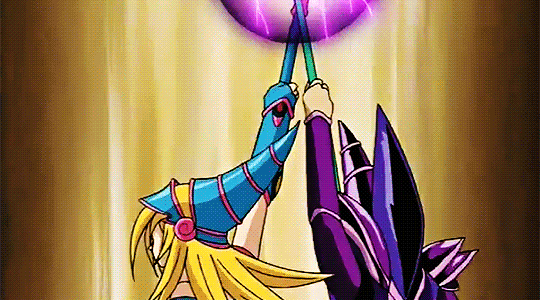
Name: Mahad, the Dark Magician
Race: Variant Human
Background: Sage
Alignment: Neutral
Class: War Magic Wizard (20)
Base Stats:
Strength: 8 (-1)
Dexterity: 17 (+3)
Constitution: 20 (+5)
Intelligence: 20 (+5)
Wisdom: 8 (-1)
Charisma: 8 (-1)
Saving Throws:
Strength: -1
Dexterity: +3
Constitution: +5
Intelligence: +11
Wisdom: +5
Charisma: -1
Combat Stats:
HP: 182
AC: 13
Speed: 30
Initiative: +8
Proficiency Bonus: +6
Passive Perception: 15
Dark Vision: 0 feet
Proficiencies:
Arcana (Sage)
History (Sage)
Insight (Wizard)
Religion (Wizard)
Skills:
Acrobatics: +3 Medicine: -1
Animal Handling: -1 Nature: +5
Arcana: +11 Perception: +5
Athletics: -1 Performance: -1
Deception: -1 Persuasion: -1
History: +11 Religion: +11
Insight: +5 Sleight of Hand: +3
Intimidation: -1 Stealth: +3
Investigation: +5 Survival: -1
Equipment:
Arcane Focus: Staff
Spell Slots
1st (4)
2nd (3)
3rd (3)
4th (3)
5th (3)
6th (2)
7th (2)
8th (1)
9th (1)
Dark Magician’s Spellbook
Cantrips 3rd Level 6th Level
Create Bonfire Call Lightning Arcane Gate
Eldritch Blast Counterspell Globe of Invulnerability
Firebolt Dispel Magic 7th Level
Mage Hand Fireball Conjure Hezrou
Mind Sliver Magic Circle Mord’s Sword
Minor Illusion Summon Lesser Demons 8th Level
1st level 4th Level Antimagic Field
Detect Magic Arcane Eye Dominate Monster
Hex Banishment 9th Level
Mage Armor Conjure Minor Elementals Prismatic Wall
Magic Missile Conjure Shadow Demon
Shield Leo’s Secret Chest
Witch Bolt Locate Creature
2nd Level Phantasmal Killer
Arcane Lock Summon Greater Demon
Crown of Madness 5th Level
Flock of Familiars B’s Hand (Arcane Hand)
Knock Conjure Elemental
Locate Object Dominate Person
Magic Weapon Infernal Calling
Mirror Image Legend Lore
Misty Step Planar Binding
Shadow Blade Synaptic Static
Teleportation Circle
Wall of Force
Features:
Arcane Deflection: When attacked, as a reaction, add +2 AC or +4 saving throw, but cast only cantrips next turn.
Arcane Recovery: Once per day, after a short rest, restore 10 or fewer level 5 or lower used spell slots.
Deflecting Shroud: 3 creatures take 10 force damage after Arcane Deflection.
Durable Magic: +2 to AC and saving throws when concentrating on a spell.
Magic Initiate: Learn Eldritch Blast, Mind Sliver, and Hex. Cast with INT.
Power Surge: You have max 5, each surge adds 10 force damage to a spell.
Researcher: You always know where to find information or who to get it from.
Signature Spells: Cast Fireball and Dispel Magic without using a spell slot.
Spell Mastery: Cast Magic Weapon and Mage Armor without using a spell slot.
Tactical Wit: Add your INT mod to your Initiative.

keep in mind, the spell list is not conclusive, it’s a personal choice. I chose to have Dark Magician learn all the spells of the Arcane Cleric, and just tried to pick the standard magic spells, especially about anything with Arcane in its name. Because both Yugi and Mahad summon monsters to fight for them, I decided it was appropriate to give Dark Magician a lot of conjuration spells, but that doesn’t mean you have to use the Deck Master Yugi/Dark Magician build I suggested where Yugi does the summoning and Dark Magician handles everything else. It’s not a perfect build, but then, I never expected it to be. Still, I hope you guys found this to be a fun, quirky DnD concept. Let me know if you’d build this character differently than I did. And as always, thanks for joining me in The Character Forge, where heroes are made.
#dungeons and dragons#dark magician#dark magician girl#yugi mutou#yugi#yami#yami yugi#pharaoh#pharaoh atem#atem#mahad#mahado#mana#black magician#black magician girl#yugioh#original series#yugioh original series#yu-gi-oh#yu-gi-oh!#king of games#millennium puzzle#dark magic attack#the dark magician#duel monsters#duel links#yugioh duel links#dm#dmg#ygo
290 notes
·
View notes
Text
Legacy Items: Magic Items More Powerful Than “Legendary”...
An item of legacy has the capacity to grow in power as its wielder advances in level. In addition, it confers increasingly powerful special abilities on its wielder.
That character might carry and treasure the same item over his or her entire career as a hero (or villain).
Why not?
As the Player's own talents and abilities progress, so too do those of the legacy item, assuming the wielder takes the time to learn its history and awaken its quiescent power with the appropriate rituals.
As a player character, you could discover or inherit an item of legacy. Initially, it might seem like nothing more than a standard magic item.
Only when you learn something of its past do you begin to understand that this object has untapped potential.
By uncovering the item’s full history, you can discover the keys that unlock the item’s full power...
Every item of legacy is distinct from the next, and each has its own unique story.
WHY USE ITEMS OF LEGACY?
If you’re a DM, items of legacy provide exciting rewards for players whose characters are willing to devote time and energy to learning about your campaign world. To unlock the powers of a legacy item, a player character must learn fabled legends of ancient history and complete rituals of mythic significance.
Not only does this require the player to study the “backstory” of your world but also provides any number of ready-made adventure hooks for the campaign.
If you’re a player, a legacy item presents a way of personalizing your character while simultaneously building up your might.
By tying your character's development to one of the great tales of history, your character takes on heroic proportions.
Who knows? They might even become more famous than the first owner of the legacy item, unlocking powers of even greater potential.

USING LEGACY ITEMS IN YOUR CAMPAIGN
As a DM, you might hesitate to introduce these potentially powerful items into your campaign.
And as with any new addition to your campaign, you must determine how items of legacy fit in.
What role (if any) did they play in the history of the campaign world?
Why haven’t the player characters heard of them before now?
Are there any active items of legacy in the world today?
Most important, do the PCs—knowingly or unknowingly—possess any legacy items already?
WIELDING AN ITEM OF LEGACY
After having completed at least one of the legacy rituals of your item, you are entitled to use the abilities of that item available to a character of your level.
That’s right—you don’t get them all at once.
If you are 5th level and you have just earned the Least Legacy (Bloodcrier’s Hammer) feat, as an example, you do not have access to abilities of the weapon keyed to characters of 6th level and higher.
However, as soon as you attain another level in any class, bringing your character level to 6th, you can use the earthseeker ability of Bloodcrier’s Hammer.
Unless otherwise specified, an item of legacy confers a given ability as long as you are wearing or carrying it on your person; some abilities, however, require that you wield, gesture with, or in some way actively use the item.
Such abilities’ descriptions state this specifically. Losing possession of the item immediately removes all legacy benefits.
(Don’t worry, we will show you what the Bloodcrier’s Hammer is soon enough.)

In addition to performing a ritual and paying its GP cost, you must pay personal costs to use a legacy item’s ability.
All items of legacy exact substantial personal costs, which represent the item’s tapping
into your vital energy to unlock its full potential.
You must make this sacrifice willingly to forge the bond between wielder and item.
Personal costs are permanent and can range from hit point loss to forfeiting spell slots. You must pay a personal cost immediately upon reaching the level at which it is assessed, after all other level-related adjustments.
For example, if you are the wielder of Bloodcrier’s Hammer, on reaching 6th level you immediately lose 4 hit points after determining your new hit point total. If you are unable to pay the cost:
(for example, because you do not have access to a required spell level)...
You do not gain that level’s legacy ability or abilities until you can pay.
Unlike legacy abilities, personal costs are assessed permanently, whether or not you have the item in your possession.
The only way to recover a personal cost is to destroy or renounce the legacy item.
RENOUNCING A LEGACY
Perhaps the cost of wielding your legacy item is too high, or you have discovered a different item and no longer wish to wield the original one.
If you wish, you can renounce your connection with a legacy item.
This requires performing a 24-hour ritual that expends materials costing 1,000 gp.
On concluding the ritual, you lose all bonus legacy feats (Least Legacy, Lesser Legacy, Greater Legacy) you had previously gained for that item.
For you the item now has only its non-legacy properties, and you lose all legacy abilities you previously had access to. You recover any personal costs you previously paid (such as lost hit points or penalties), but not any gp costs paid for legacy rituals.
EXAMPLE OF A LEGACY ITEM: BLOODCRIER’S HAMMER
Bloodcrier’s Hammer is an enormous warhammer forged entirely from black iron. A grinning skull is etched into the surface of the hammer’s head.
Large +1 warhammer; Damage 2d6+1; Critical ×3; Cost 2,324 gp; Weight 10 lb.
Bloodcrier’s Hammer is a Large weapon.
A Medium creature can wield the hammer with two hands with a –2 penalty on attack rolls.
Small creatures cannot use the hammer without some special ability to wield Large weapons (such as the Monkey Grip feat described in the sidebar).
Omen: In any round of combat during which the warhammer is not drawn and used, it cries and moans. When the hammer is brought to bear in battle, reddish fluid seems to seep from the engraved skull’s eye sockets.

Legacy Rituals: Bloodcrier’s Hammer
Three rituals are required to unlock all the abilities of Bloodcrier’s Hammer
Trial By Earth: You must defeat a creature with the earth subtype in personal combat, these creatures include Galeb Duhr and Earth Elementals.
The creature’s Challenge Rating must be equal to or greater than your character level. Cost: 2,200 gp.
Feat Granted: Least Legacy (Bloodcrier’s Hammer).
Mourning Service: You are required to pay homage at the grave of Bhazad Khrar, which is lost in the center of a sighing waste. Cost: 12,500 gp.
Feat Granted: Lesser Legacy (Bloodcrier’s Hammer).
Judgment of the Scablands: You have to spend three days in the extreme heat of the desert scablands without food, water, weapons, or shelter. Survival is not necessary to successfully complete this ritual.

Legacy Item Abilities: Bloodcrier’s Hammer
All the following are legacy item abilities of Bloodcrier’s Hammer.
Earthseeker: At 6th level and higher, while wielding Bloodcrier’s Hammer, you can detect any elementals or any creature with the earth subtype within 60 feet.
You must concentrate (a standard action) to do so. The hammer ignores any damage reduction an earth-subtype creature possesses.
Pathbreaker: Beginning at 7th level, once per day when Bloodcrier’s Hammer is struck against a lock, lid, door, valve, portal, normal bars, shackles, chains, bolts, and so on, a mournful tone rings forth.
The struck item opens 1 round later.
Bloodcrier’s Hammer also automatically dispels a hold portal spell or even an arcane lock with a caster level lower than 15th.
Each strike opens only one form of locking, so if a chest is chained, padlocked, locked, and arcane locked, it takes four strikes to open it.
Earthen Stature: You can change size while standing on solid earth or stone. Starting at 8th level, you can issue a command word to use enlarge person once per day (self only) as the spell.
At 12th level, you can use this ability at will.
The Earth Provides: At 9th level and higher, you need not eat or drink while underground or in any place with the earth-dominant elemental trait.
Deny Earth’s Embrace: At 10th level and higher, you need no longer fear the unforgiving crush of the earth after a fall.
This ability acts exactly like a feather fall spell, and it is activated immediately if you fall more than 5 feet.
Stony Resistance: At 15th level, you gain a +2 bonus on all saving throws.
Meld into Stone: Beginning at 16th level, as a bonus action once per day, you can use meld into stone as the spell.
Terra Obscura: At 17th level and higher, while you remain in contact with solid earth or stone, Bloodcrier’s Hammer cannot be detected remotely through scrying, remote viewing, or other means of divination, as if continually affected by the obscure object spell.
Wall of Stone: Beginning at 18th level, two times per day by holding Bloodcrier’s Hammer forth and speaking a command word, you can use wall of stone as the spell.
Earthwalker’s Bane: Starting at 19th level, in your hands Bloodcrier’s Hammer has an effective attack bonus +1 better than normal and deals an extra 1d6 points of damage against any creature in contact with solid earth or stone.
Ignore Earth’s Clutch: At 20th level and higher, you constantly gain the benefit of a haste spell while standing on solid earth or stone.
373 notes
·
View notes